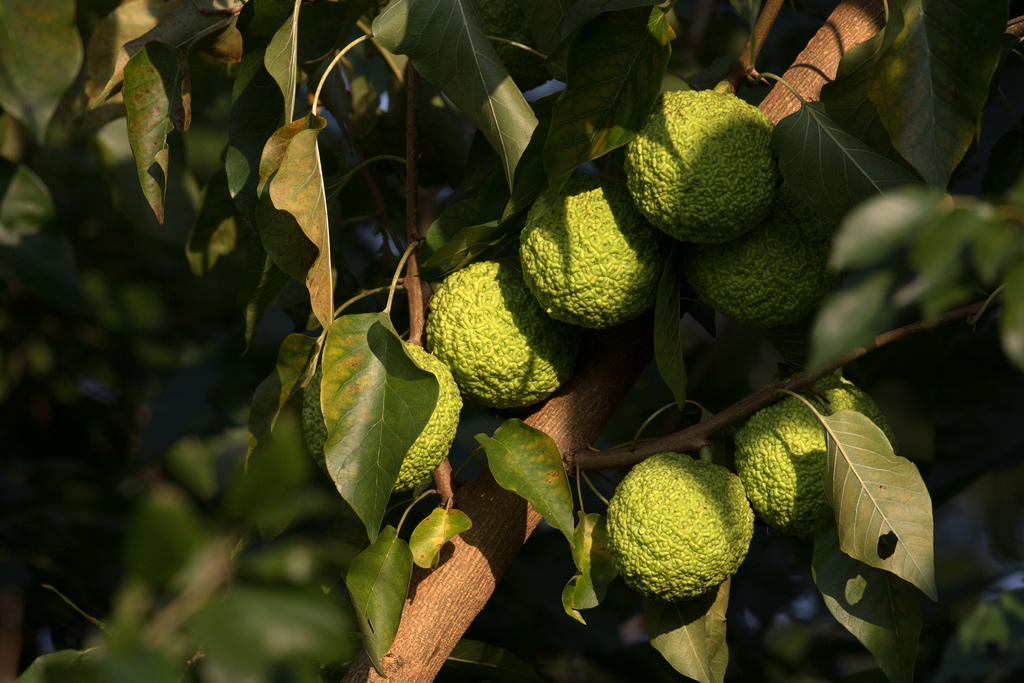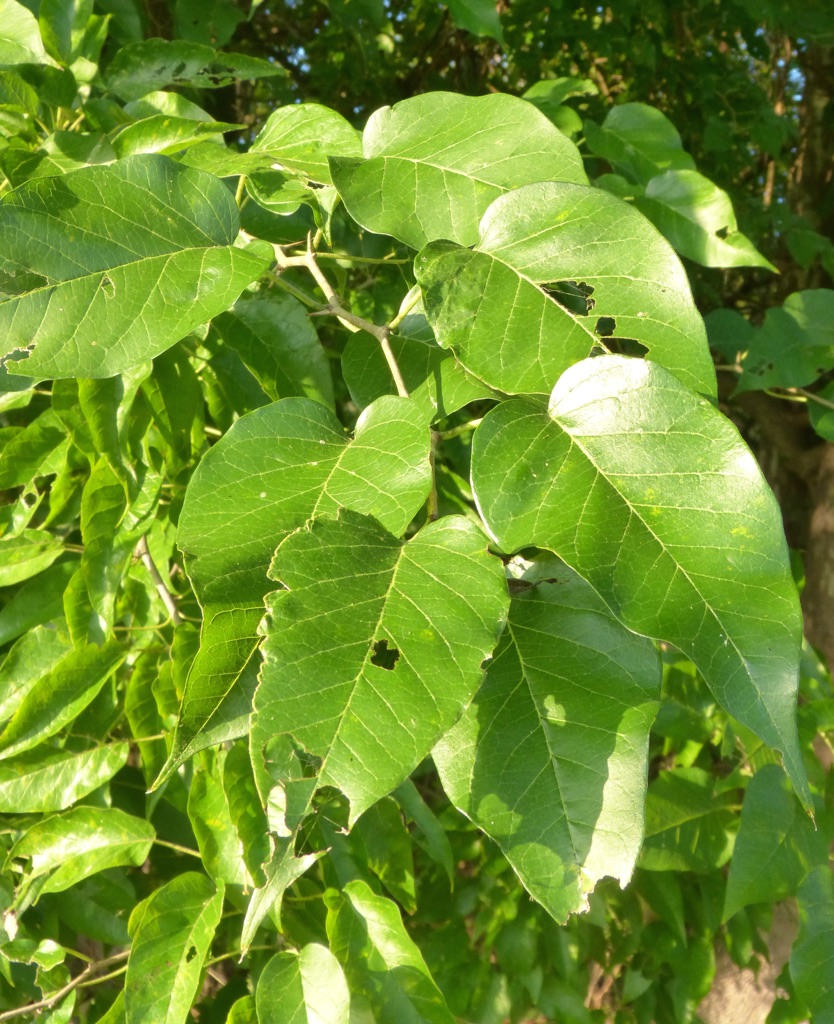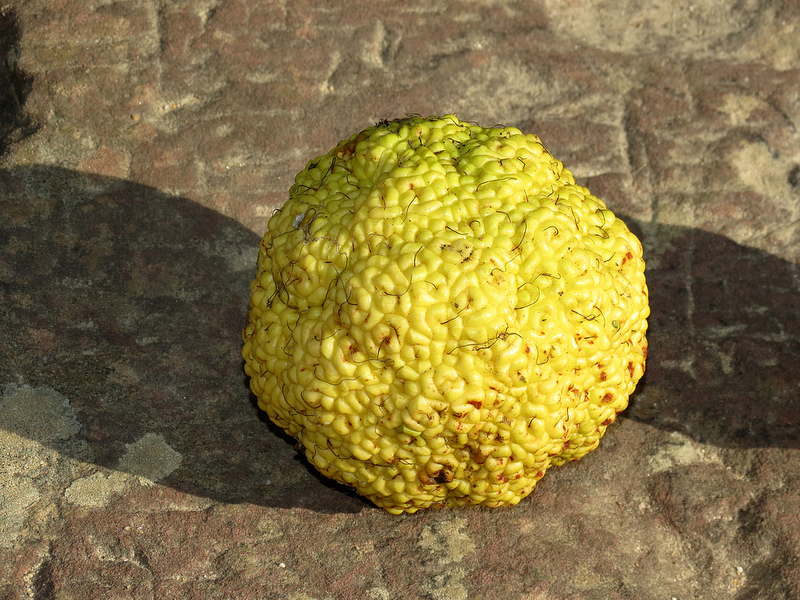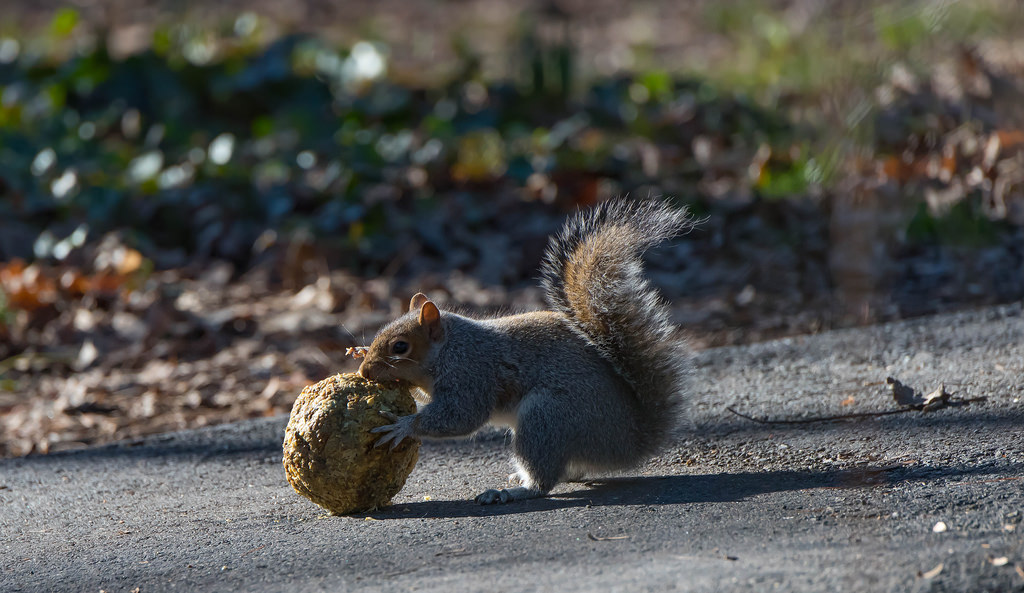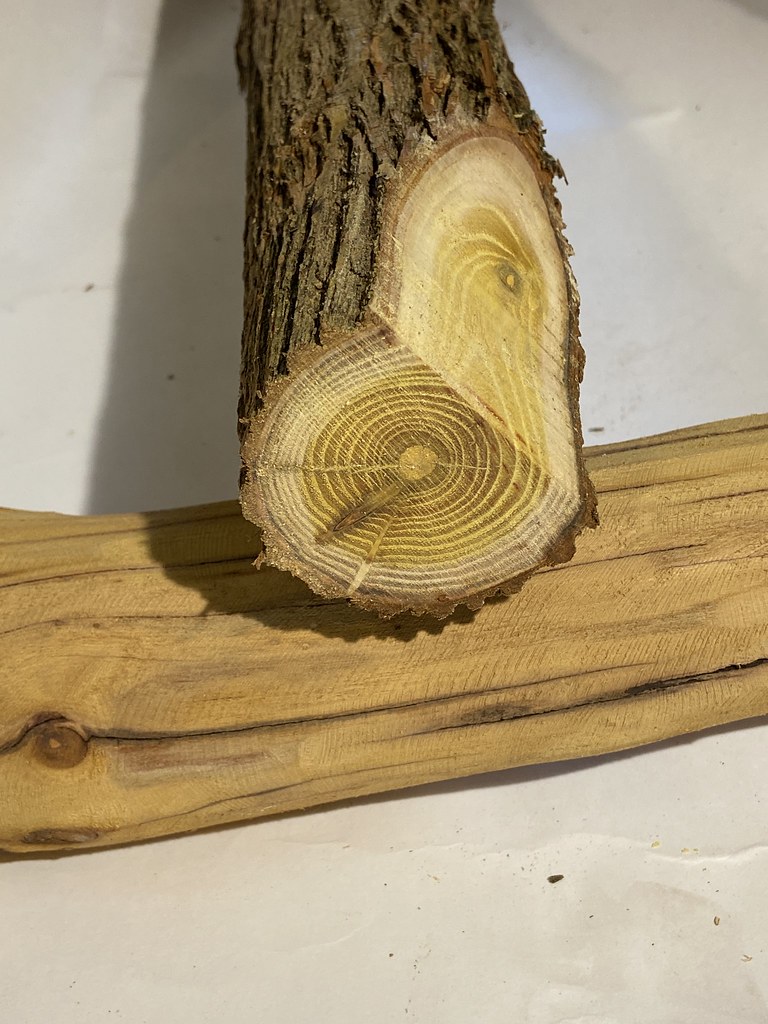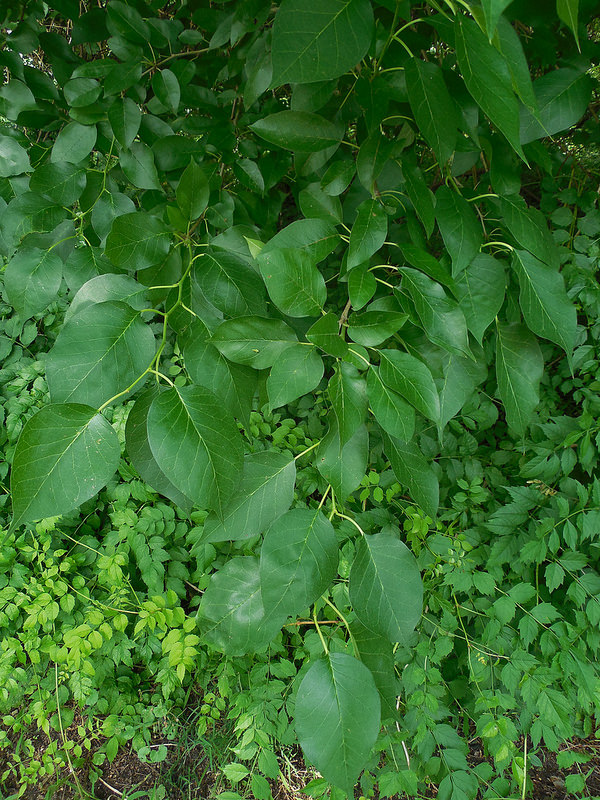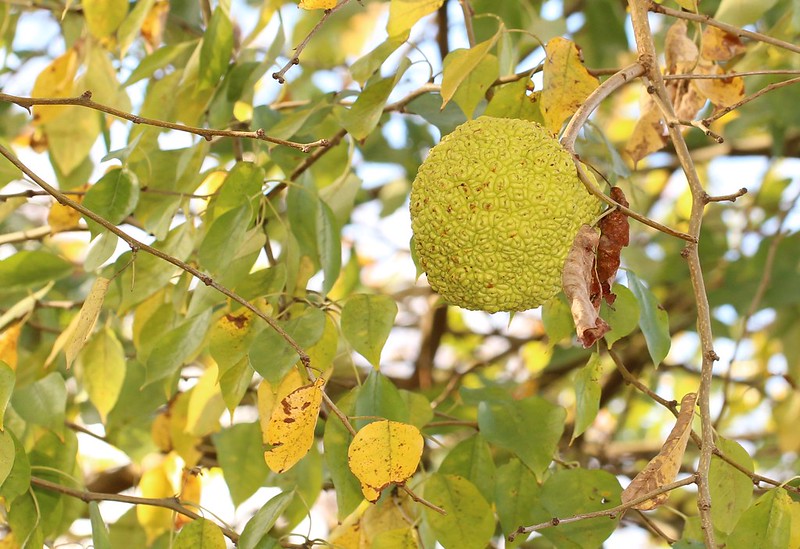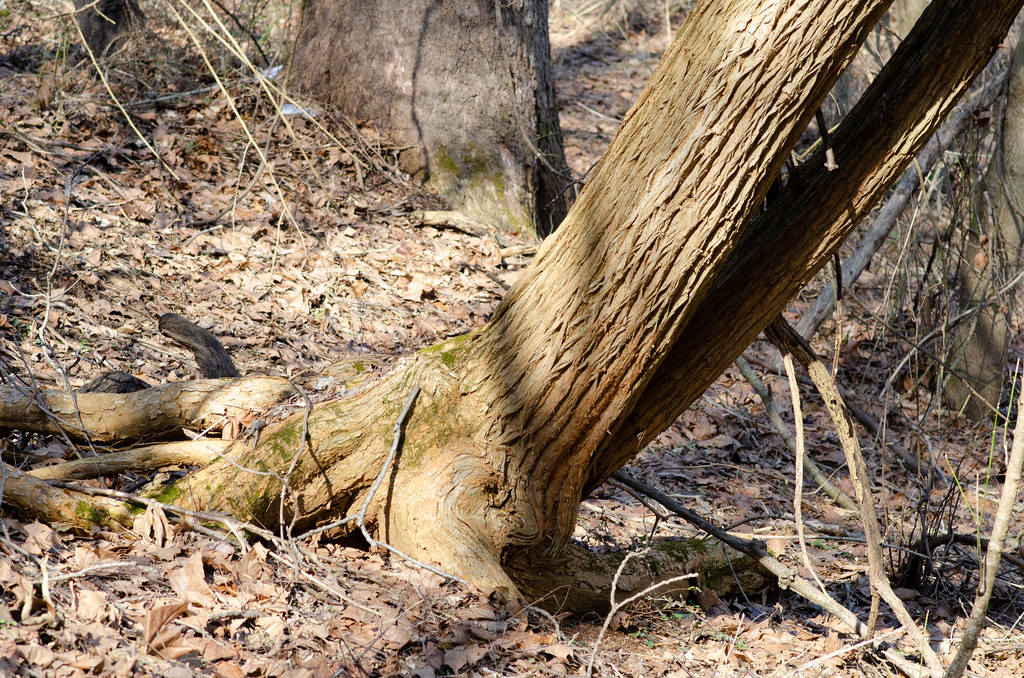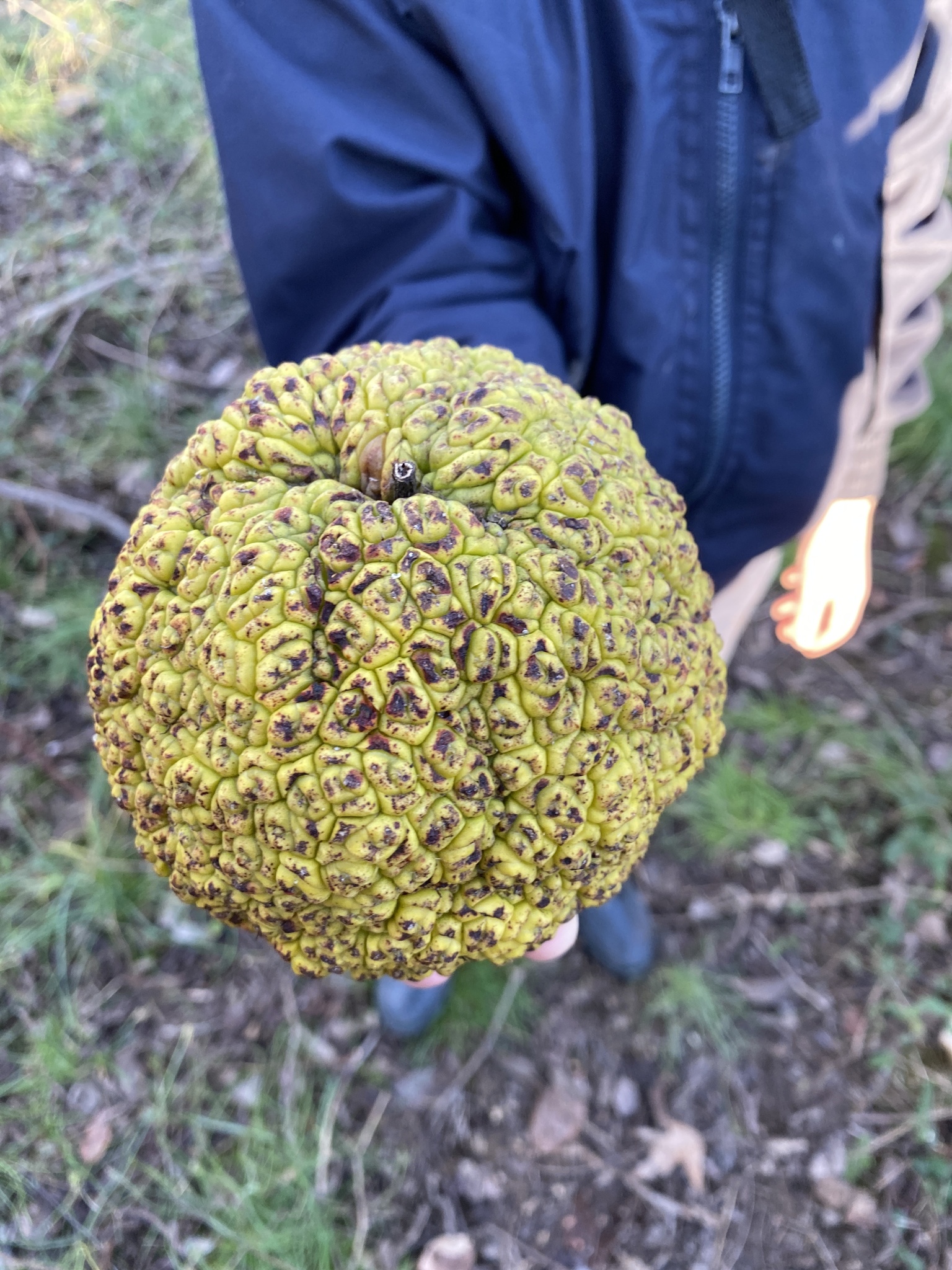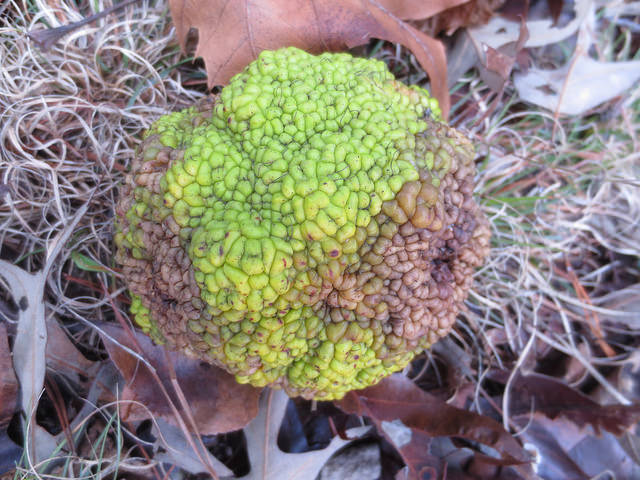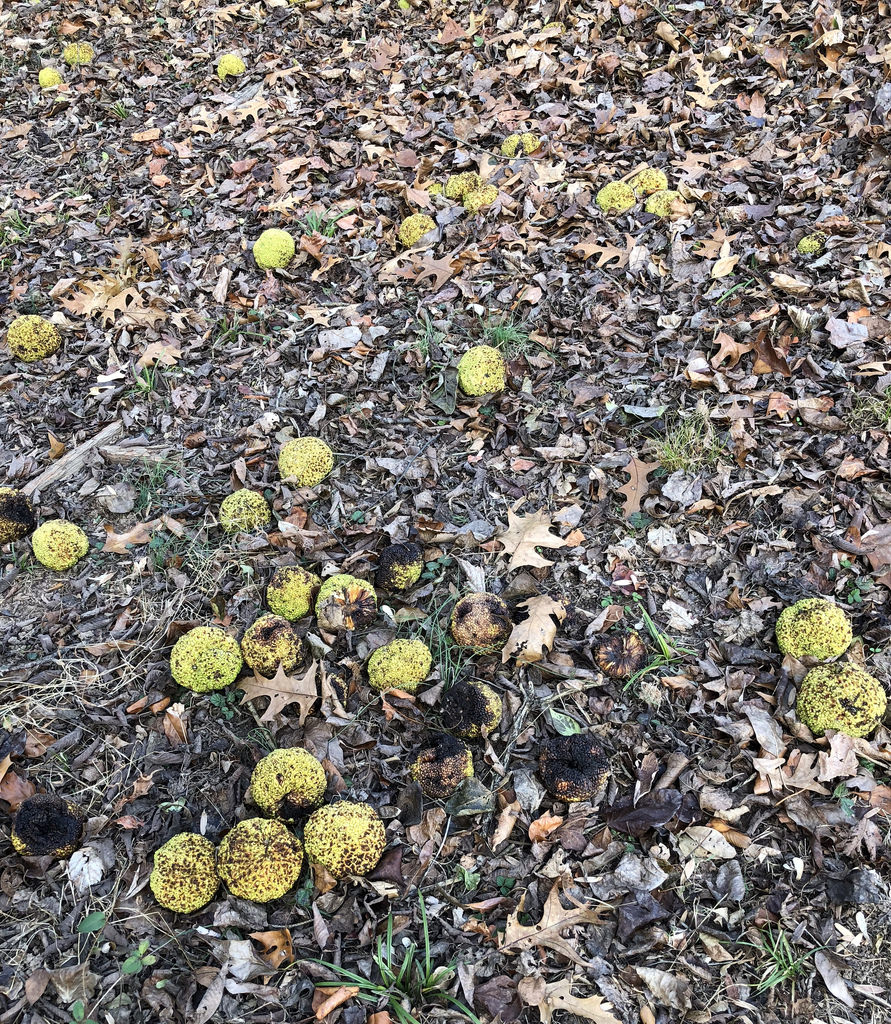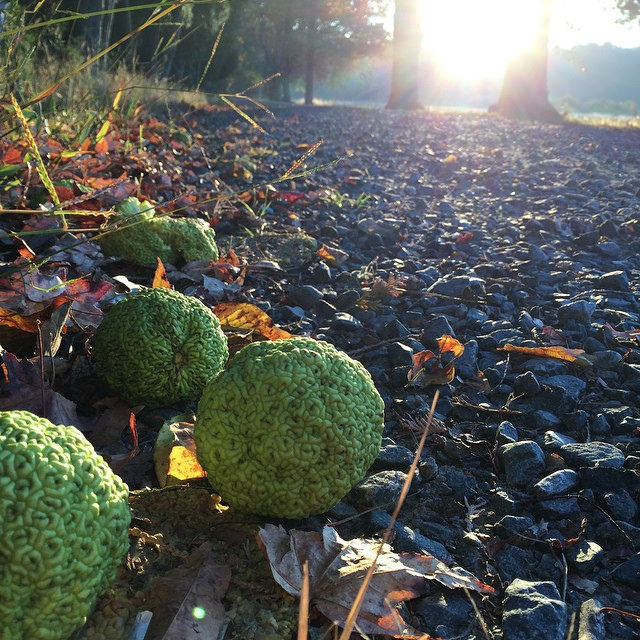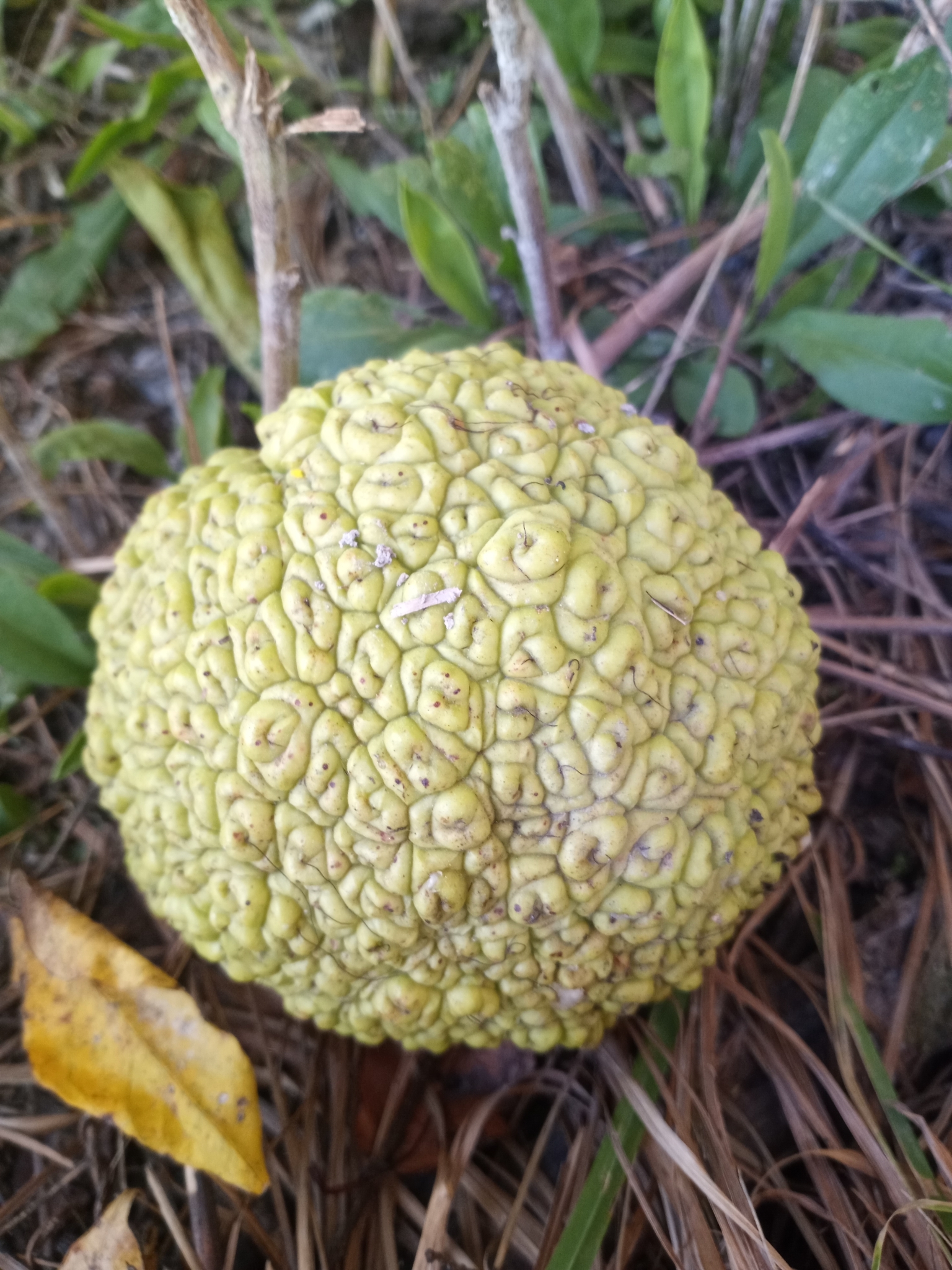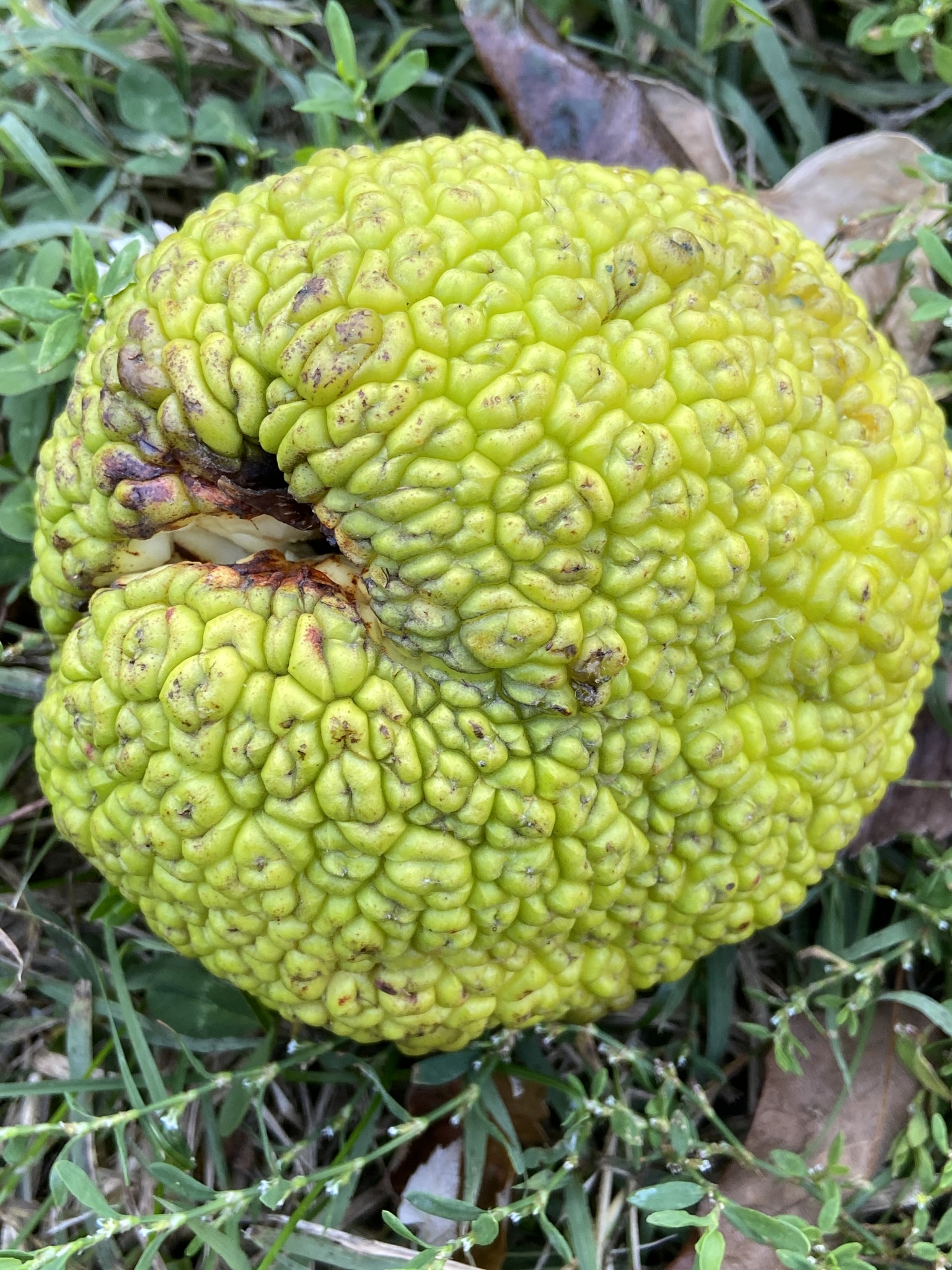

 Synonyms: Toxylon pomiferum.
Synonyms: Toxylon pomiferum.




















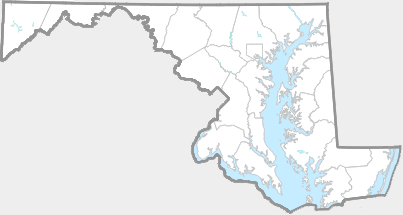
Maryland is not considered to be within the natural range of Osage Orange. The tree is originally native to the Southwest. Widespread plantings of it throughout the United States, however, have led to its escape, and now it is relatively common in Maryland. In its natural range, it is found in bottom lands, but it will grow in many kinds of soil.
A medium-sized tree (in its natural range). The twigs are armed with sharp spines. The wood, which is one of the heaviest of our native timbers, is a bright orange color (Harlow, 1957). Crushed leaves exude a milky sap, as is typical of members of the Mulberry Family.
The large, heavy, fleshy fruits of Osage Orange have apparently had no effective dispersal agent since the extinction of ice age megafauna such as giant ground sloths, mastodons, and mammoths. The loss of these animals is thought to have restricted the plant's post-ice age natural range to Texas, Oklahoma, and adjacent areas of the southern plains, where it was driven by the last glaciers. Since then, humans have widely planted Osage Orange for hedges, fencerows, and windbreaks, and it has escaped from cultivation in Maryland and many other states. Squirrels and quail eat the seeds to a minor extent (J. Hill/MNPS).
There are 236 records in the project database.
| GA | AL | WA | FR | CL | MO | HO | BA | BC | HA | CE | PG | AA | CV | CH | SM | KE | QA | CN | TA | DO | WI | SO | WO |
